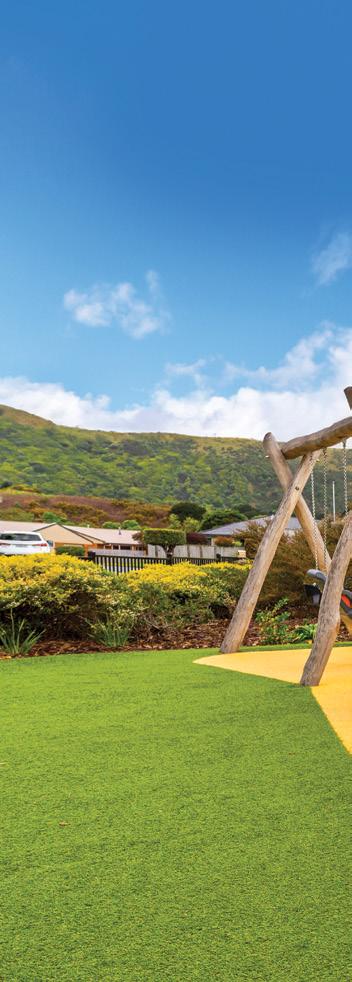How to build a playground in 2023
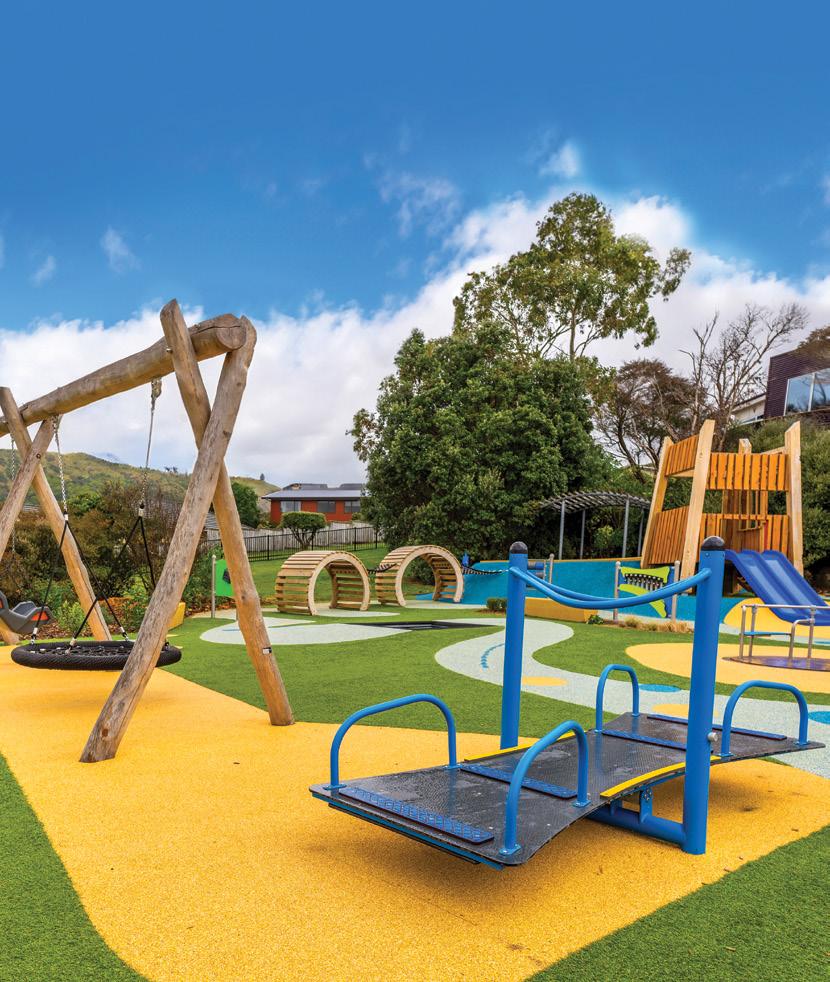


Congratulations on taking the time to learn about this exciting and sometimes overwhelming journey that is designing and building a playground.
We’re here to act as a guide to help you find your bearing and navigate your way through the process.
Our commitment is to inform and advise with honesty and transparency. It is our hope that at the end of this guide, you’ll be able to make an empowered decision with all the relevant information in hand.
Even if you don’t end up working with us, we want each step of the process from exploration, to design, to construction, to be a great experience. We feel this is the only way to operate in this modern information age.
In case you are not familiar with us, we design and build playgrounds –and we do it for customers all over New Zealand.
If you’d like to see what our customers say about us, take a moment to check out our case studies page on creospace.co.nz/our-work
Perhaps you are still unsure whether a playground design and build company is right for you. To explore the different options for designing and building a playground, see the summary table on page 6.
Chapter 1
4. About
6. What are the options for building a playground in New Zealand?
7. How much does a playground cost?
The cost of building a playground in New Zealand in 2023
How much should I budget for my playground?
How do I plan my design budget?
How do I plan my play equipment budget?
How do I plan my play surfacing budget?
How do I plan my site preparation budget?
Budgeting Tip
Chapter 2
12. How do I choose the right type of playground for me?
Desired Aesthetic
Level of Inclusion & Accessibility
Age Range Catered For Range of Play Types
Level of Custom Design
Size
Chapter 3
14. Which playground companies are best?
Playground Designers
Playground Equipment Suppliers
Playground Surfacing Suppliers
Full-service Playground Builders
5 reasons why Creo decided to become a Full-service Playground Builder
A few testimonials from recent Creo customers
Chapter 4
17. What’s the best way to build a playground?
Chapter 5
18. What are some of the most common mistakes people make when building a playground?
Started in 2016, Creo was an outgrowth of established playground surfacing company, Numat.


At the time, Numat’s General Manager, Jacob Judd, saw a problem in the playground building industry that no-one was addressing. He noticed that while the industry had all the services customers needed to build their playgrounds, they were all spread out making projects difficult to manage.






Playground designers made designs. Equipment companies supplied equipment. And surfacing installers laid safety surfacing. But no-one brought it all together to make playground projects easier for the customer.

So, in late 2016 Jacob and his team started ‘Project 360’, a playground building service that included playground design, project management, equipment installation, and safety surfacing installation.











In 2017, the renamed Creo team worked on many projects including the design and construction of six early childhood playspaces, two school playgrounds, and a council playground.
Since then, the Creo team has grown to include playspace consultants, landscape architects, designers, project managers, carpenters, and installers.


Our team is passionate about building exceptional playspaces and making the playground building journey a fun one for our customers nationwide.


















Our people are at the heart of everything we do.

The Full-service Playground Builder Option
Work with one company that does everything.
Desired Qualities for a Playground Build
Level of Design
Speed of Project
Project Efficiency
Theme Customizability
Low Initial Cost
Play Value
Low Project Management Requirements
You may not yet know whether you want to manage your own playground project from start to finish, opt for an equipment and surfacing only playground, or work with a full-service playground builder who can do everything for you from design through to construction. This quick overview outlines the differences between these three main options.
The Multi Company Option
The ‘No Design’ Option
Work with a separate Designer, Equipment Supplier, and Surfacing Installer
Work with an Equipment Supplier and Surfacing Installer Only
Chapter
In this section, we’re going to discuss playground costs and provide you with the information you need to determine a ballpark price for your playground.
In this video, Playspace Consultant, Ben Witty, discusses the topic of playground pricing and explains some of the factors that will help you plan your playground budget.
Determining your playground budget is probably the most pressing question you have. Let’s explore this in more detail so you can understand how to budget for your project.
The first thing to understand is that buying a playground is a lot like buying a house. The price really depends on a wide range of factors including size, level of design, location, and materials.

• To build a school playground or early learning centre playground you will pay between
$ 400 - $ 850* $ 600 - $ 1100*
If you want to build a playground that’s suitable for all ages and abilities, you can break your budget down into four main categories:
In our experience, design is critical to creating successful playgrounds. Without it, playground equipment, surfacing, and landscaping do not work well together, and the overall feel of the playground suffers. When it comes to allocating budget towards the design of your playground, there are a few things to consider:
• Will you include a consultation process to gather ideas from the community?
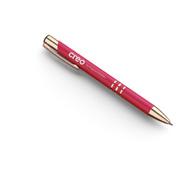
Engaging local families and children is a great way to ensure your playground meets the needs of the people who will be using it, but it also takes more time and adds to the cost of your project.
• Do you want your designer to create multiple different concept designs to choose from or just one design that fits your brief?
Obviously, adding more designs will cost more.
• Will you bring any cultural or local themes into the design?
The more complex a design the higher the cost will be.
• Will you work with a company that handles the design and the construction of your playground?
Working with separate companies can add to the cost of your project. Working with one company, reduces overhead costs, which can make your project less costly.
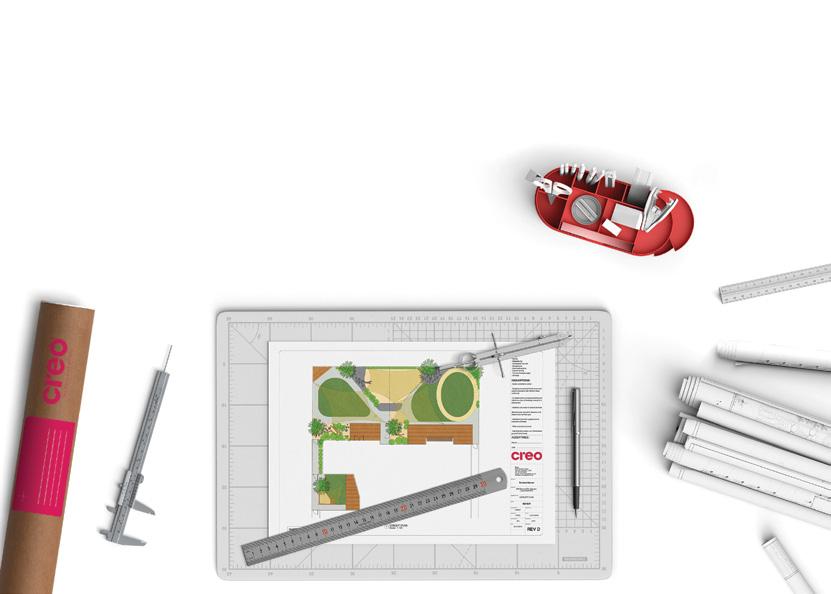
If you’re like most people starting out on their playground building journey, you probably started out thinking about the kinds of playground equipment you need. Obviously, playground equipment is very important for creating an exciting and fun playground. So, it’s worth spending some time learning about the questions you need to ask before setting a playground equipment budget.
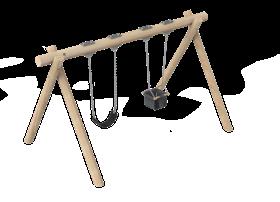
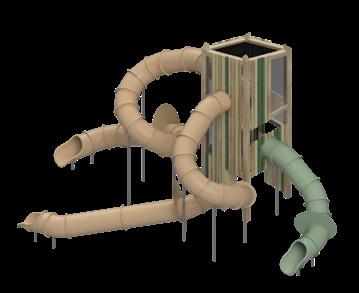
Here’s a list of questions that will help you determine what you need:
• Can you use some of the existing equipment?
If your existing play equipment is still in decent condition, you might be able to reconfigure, relocate, or reuse it, saving you from spending a portion of your budget.
• What play types do you need?
There are many play types such as, sliding, spinning, swinging, climbing, or unprescribed play, that can be brought in, so have a think about what you need and want in your space.
• Are there long lead times on the equipment? This will impact the timely completion of the project and might also drive costs up or down.
• What are the hidden costs of the installation? These are things like, freight of material and installation of the equipment.
• What are the maintenance costs of the playground? This ranges from surfacing to equipment to landscaping.
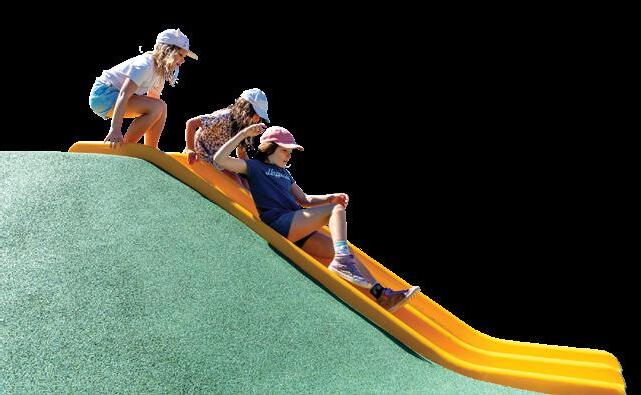
• Do you want off-the-shelf equipment, or are you looking for something customized for your space? This will impact lead times and cost.
• What kind of materials do you want to use in your playground?
The materials used will greatly impact the cost. Are you wanting plastic, metal, or maybe wooden features?
• Do you need to install shade?
In sun exposed places, it’s important to provide shade. Shade sails will add an extra cost to your project.
• Do you require outdoor furniture for your playground? You may require seating for people who are supervising children in your playground.
Play surfacing is often overlooked when people are planning a playground, but it makes up a significant part of every playground project. Therefore, it’s important to consider your playground’s surfacing at the same time you are working out your equipment and design needs. All these things together will have a bearing on the cost of your project.
When considering surfacing options for your playground, you should ask yourself the following questions:
• What is the fall height of the equipment?
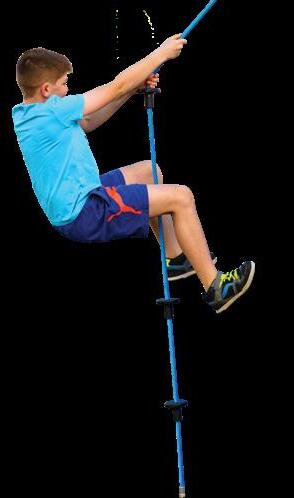
This is important to find out because the higher the equipment is, the more you might have to spend on safety surfacing.
• What is the existing surface condition?
If it needs a lot of clearing, demolition, or drainage work, it will add to the cost of your project.
• Do you need your playground to be inclusive and wheelchair accessible?
Some low cost surface options are not suitable for accessible playgrounds.
• What kind of ongoing surfacing maintenance are you okay with?
Some surfaces require more maintenance than others. For example, wood chips need to be topped up annually whereas wet pour rubber surfaces require very little ongoing maintenance.
• Is a loose safety surface going to affect the usability of adjacent areas?
Loose material will spill out beyond its borders. Will this make adjacent areas unusable?
• Are you wanting to include surface mounds and topography play into your space? Only a few surface options allow for this level of design.
• Do you want a theme designed into your surface? The more design you add, the higher the cost of the surface.
• Do you intend on landscaping the surrounding area? Adding garden areas around your playground adds to the character of your playground, but also adds to the cost.

Before you can install equipment and surfacing, you need a site that’s ready to go. This is an area where the existing site can have a major impact on costs. Some questions you need to ask when considering your site preparation budget are:
• Is there existing equipment and safety surfacing that needs to be removed or disposed of?
• Are there any drainage issues that need to be addressed?
• Will retaining walls need to be replaced or built?
• Are there any existing trees and roots that need to be worked around or removed?
For the average playground budget, aim for the rule of thirds.

1/3 of your budget for equipment
1/3 of your budget for surfacing
1/3 of your budget for design, site prep, and project costs
Think you’re ready to find out how much it will cost for your playground build?
Call us to book a 15 minute playground planning session with one of our consultants to get started.

0800 000 334

• Are there services like water, gas or power under the space that need to be worked around?
• Is access into the space okay for trucks and equipment?
• Does pedestrian traffic need to be worked around?
• Will the project be completed in stages or in one go?
• DESIGN
• SITE PREP
•
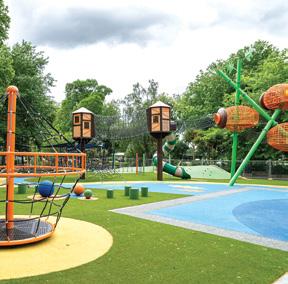
In this chapter, you’ll learn about six different ways to look at playgrounds that will help you determine the type of playground you need. The six ways to look at a playground are:
• Desired Aesthetic
• Level of Inclusion & Accessibility
• Age Range Catered For
• Range of Play Types
• Level of Custom Design
• Size
A playground’s aesthetic really comes down to the types of materials used. Plastic, rubber, and metal materials are often associated with vibrancy, colour, and a finished, ‘manufactured’ look. Playgrounds that stick to wood and natural fibres are often seen as more ‘natural’ than these types of playgrounds. Of course, all these different materials can be used together to create a blended aesthetic but striking the right balance between them is a difficult challenge and one that’s probably best left to a professional playground designer.
It’s important that you establish the type of playground aesthetic you want at the beginning of your project so your designer can choose equipment and surfacing that aligns with your goals.
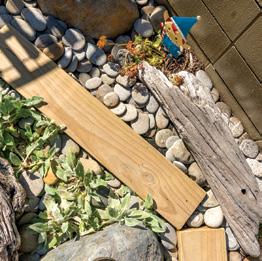
If you are looking to create a fully inclusive and accessible playground, then you need to think about the equipment and materials you use.
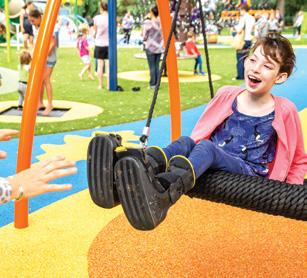
Many playground equipment suppliers now offer accessible play options such as wheelchair accessible carousels and mini-trampolines. Other types of equipment, such as basket swings, allow for easy transfer between the equipment and a wheelchair.
Sensory elements are important, particularly for inclusion as colours, sounds, and textures all play a large role in creating a multi-sensory space.
Highly visible colours, for example, can be used to mark out danger areas, such as around swings for children with low vision, and musical play equipment can provide an alternative play experience. Finally, for a playground to be truly inclusive and accessible, it needs smooth safety surfacing that doesn’t hinder movement.
When designing your playground, it is important to establish the age of the end users. Many schools and early childhood centres are able separate their play areas into junior and senior playgrounds to provide age-appropriate equipment at each level. But some playgrounds, particularly those in public spaces, must be designed for all ages. This is where you need to decide how much area you allocate to each age group. This will help you decide which play equipment items you need.
Often, the older you go, the larger and more expensive the equipment is. It’s also important to think beyond the play equipment, for example, your playground may need extra seating in areas where adults will be supervising young children.
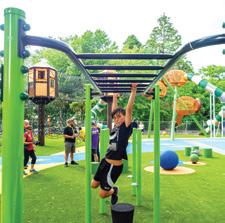
The range of play types required will have a large impact on the type of playground you build. To determine which types of play you need, think about the children who will be using the playground. Will there be a lot of children using it at one time or just a few?
REFER TO DWG LP08 AND LP08A FOR DETAILED SETOUT
Some types of play to consider are swinging, climbing, balancing, spinning, sliding, and rocking. We recommend providing a balance of play types to make your playground more engaging for longer. As a rule, look for play items that deliver distinct types of play to many children at once that are engaging enough to keep them playing for a considerable period.
REFER TO DWG LP08 AND LP08A FOR DETAILED SETOUT
Building a playground doesn’t just need to be about providing play for children, it can also be about creating a space where people connect, collective stories are told, and cultural values are shared and reaffirmed. It doesn’t matter if it’s a school, early childhood, or public playground. In each case, these playgrounds are built for communities. Listening to their voices during the design process and incorporating their ideas into your playground build will be a great way to create something special for everyone.
The degree to which you incorporate your community’s cultural reference points into your playground design will vary depending on your budget and time but adding a unique touch doesn’t have to be complicated. It can be as simple as adding a touch of paint to show local colours, logos, or symbols.
Lastly, you need to think about how big your playground will be. Here, knowing your budget is vital. As a guide, when building a school playground or early learning centre playground you will pay between $350 - $800 per m2 and for a council playground the cost is between $550 - $1000 per m2.
Our recommendation is to speak to an experienced playground builder who can give you guidance on how big you can go with your playground based on your budget, desired aesthetic, level of inclusion, age range catered for, range of play types, and level of design.
At Creo, we have playground consultants who are very experienced at this and can help you bring all of these aspects together into an achievable plan.
Think you’re ready to start planning your playground build?
Call us to book your 15-minute playground planning session on 0800 000 334.
More resources:
creospace.co.nz/5-principles-for-better-playground-design/ creospace.co.nz/5-clever-ways-to-pack-more-play-into-yourplayground-design/ creospace.co.nz/creo-designbuild-where-do-i-start/
Chapter
In this section, we’ll look at the various types of playground companies in New Zealand and outline what they have to offer. As you have probably discovered already, there are many different types of playground company out there which can be broken down into the following categories:
• Playground Designers
• Play Equipment Suppliers
• Play Surfacing Installers
Playground Designers
Landscape architects generally only supply designs. Once they have completed that, you would work with a construction or landscaping company to build your playground.
Playground Equipment Suppliers
Playground Surfacing Suppliers
Full-Service Playground Builders
Some companies (like Creo) go further and include bespoke equipment manufacturing and specialist play surfacing installation.
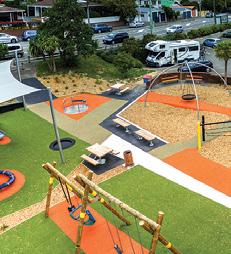
Now that you have an idea of the types of playground companies in New Zealand, let’s look at why Creo chose to become a Full-Service Playground Builder rather than simply a design or equipment company.
Traditionally, the playground industry in New Zealand has been rather fragmented. In 2016, however, Creo came on the scene with a more holistic approach to building playgrounds. Below are the 5 main reasons why we did this.
When it comes to the various types of outdoor space design, most landscape architects are generalists. They will take on playground projects, but that’s generally not their focus.
From working in the industry for many years, we saw what happens when inexperienced landscape architects design playgrounds. They were often great to look at but didn’t work from a play perspective. We felt the industry needed a company whose sole focus was playgrounds, from design through to construction.
We love building playgrounds that inspire people. And to do that, we’ve realised you really need to be highly engaged at every level of the playground building process. That’s why we have such a diverse team of passionate individuals.
From landscape architects, 3D designers, and project managers through to carpenters, builders, and site managers, we have built an integrated team that works together to deliver fantastic results.
3. We want to make building playgrounds super easy
Until now, most playground building projects in New Zealand have been completed through the collaboration of individual companies.
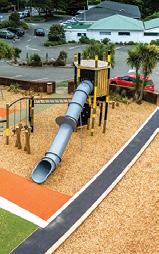
In the past, the typical project journey looked something like this: Firstly, you selected some play equipment from a local supplier, then you contacted a landscape architect to get a design done that incorporated your equipment, then you found a landscaper to create the space and install the equipment, lastly, you called in a surfacing company to install the safety surface.
This process delivered a result, but it was complicated and time consuming. With Creo, the process is far simpler. You provide the ideas and Creo takes care of the rest.
4. We want to provide assurance and peace of mind
As described above, the alternative to working with a single Full-Service Playground Builder is to work with multiple companies. Often, that means working with landscapers, installers, and labourers who aren’t playground specialists.
Building a playground this way can obviously work, but it is more prone to mistakes which could make your playground unsafe. Working with one team that specialises in playground installation hugely reduces the chances of mistakes occurring. It’s another reason why Creo has opted for the Full-service approach, and you can have peace of mind that your Creo playground will be 100% compliant with the New Zealand playground standard (NZS5828:2015).
5. We believe in the Creo way
We started Creo in 2016 to address all the above issues we saw in the playground building industry. Since then, we’ve seen first-hand the efficiencies and high-level results that can be achieved with our fresh approach.
Everyday, our designers, project managers, installers, and craftsmen work closely together to ensure each project is handled with the utmost care and attention to detail. Communication is fast and our projects run smoothly, which is something our customers really appreciate.
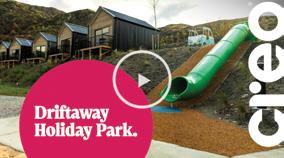
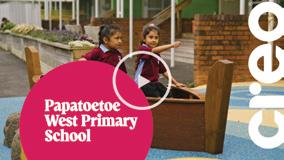
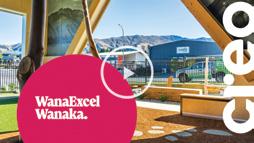
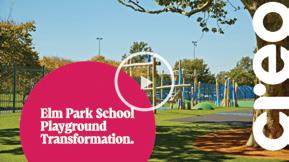
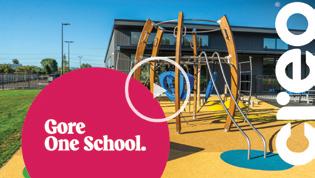
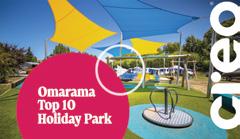
This section will cover a detailed breakdown of the Creo process with images:
We meet you on site to talk through your ideas, budget, time constraints and to understand what you need from your site. We would then proceed to gather photos and use our drone to take 3D shots to map out your enitre space.
2. Concept design
Here we sketch up one or two options for your playspace for discussion, before formalising the ideas and presenting you with a final plan and budget of the playspace.

3. Detailed design, and 3D render Design details are drawn to show how the site is to be constructed. and with the help of our specialist team we can now present the concept in the form of a walkthough 3D render.
4. Equipment procurement, and manufacturing
We gather and manufacture what we need, work out the timing of the build, access, staging and other preplanning to ensure the project runs smoothly.
At the first stage of construction, areas are excavated, and the site levels are readied.
6. Construction
Paths, structures and other items are being created and a lot of material being brought to site to create the new space. Once complete surfacing occurs. This process transforms the space from a grey construction site into a bright, usable area.
7. Finishing
To complete we finish off with any sanding, planting and the installation of any final items.
This section is designed to help you avoid some common mistakes people make when building a new playground.
When designing for a playground you should keep the end-user in mind. Visualise how the space is going to be used in the future. In this way, you can avoid any safety issues or discomfort that might arise and cause friction. Some things to think about are:
• Is there enough shelter from the wind?
• Are there enough seating opportunities for the users?
• Is there enough shade and is it in the right place?
• Will the surfacing get hot in direct sunlight and burn hands and feet?
• Is the slide facing north? If so, it might get very hot in the sun.
We’ve seen plenty of concepts and designs that were started without a discussion on the budget allocated for the project. Having an unclear budget can many cause issues down the track and result in disappointment when the concept you love turns out to be out of reach. It can also create delays add problems when it comes to installation, causing corners to be cut that end up compromising quality and safety. This is why it’s important to agree on a budget from the very beginning stages of your project. Some things that get overlooked when budgeting include:
• Site set up and security.
• Demolition and disposal of demolition work.
• Removal and dumping of topsoil.
• Any retaining walls that need to be built to level the site.
• Level and compaction of any base work.
• Drainage requirements to collect and drain any surface water.
• Services like power, water, gas, etc that might run through the site.
• Supply and installation of shade.
• Landscaping, pathways, and planting.
• Cleaning and rubbish removal.
NZS 5828:2015 covers a lot of details about the guidelines and standards that need to be followed. But here are a few areas that often get missed:
• Has sufficient safety surfacing been provided to cater for the different heights of the equipment?
• Is there sufficient spacing between the equipment and hard surfaces to provide the required fall zones?
• Has the design been thought through in terms of potential entrapments and any associated risks?
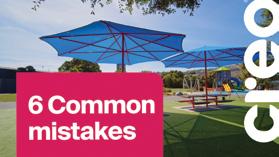
A decision needs to be made early in the design process about whether the play space will need to be accessible for all abilities. In this way, you can allocate your budget accordingly to account for appropriate features such as accessible play equipment, and safety surfacing. When designing, here are some things to keep in mind:
• Do you have a range of equipment that can be enjoyed by various abilities?
• How many inclusive play types do we have?
• Can the inclusive play equipment be accessed by those that require mobility assistance?
Creating a sense of flow in your play space helps to bring a sense of wholeness to your area. Making sure there is a connection between different elements in the playground doesn’t just make the place look well thought out but also makes the life of the users easier and their experience more enjoyable. Some things to look out for include:
• Are there sufficient site lines around and through the space to maintain supervision?
• Is the equipment arranged to provide graduated challenges?
• Are there subconscious entry and exit points with logical flow between them?
• Is the equipment too spread out? This can make the play space feel quite empty and disjointed.
• Are swings and other potentially dangerous elements positioned appropriately to minimize risk?
Having a beautiful aesthetic is nice but focusing too much on the appearance of the space can sometimes jeopardise the play value. When designing a playground, you must keep the experience and utility of the play area in mind. Ask yourself, has an appropriate portion of the budget been allocated to maximising play value? As opposed to something not playable like an expensive fence or water feature. Thinking about the end-user and how they will use the space is key to making sure your project is fun and exciting.
